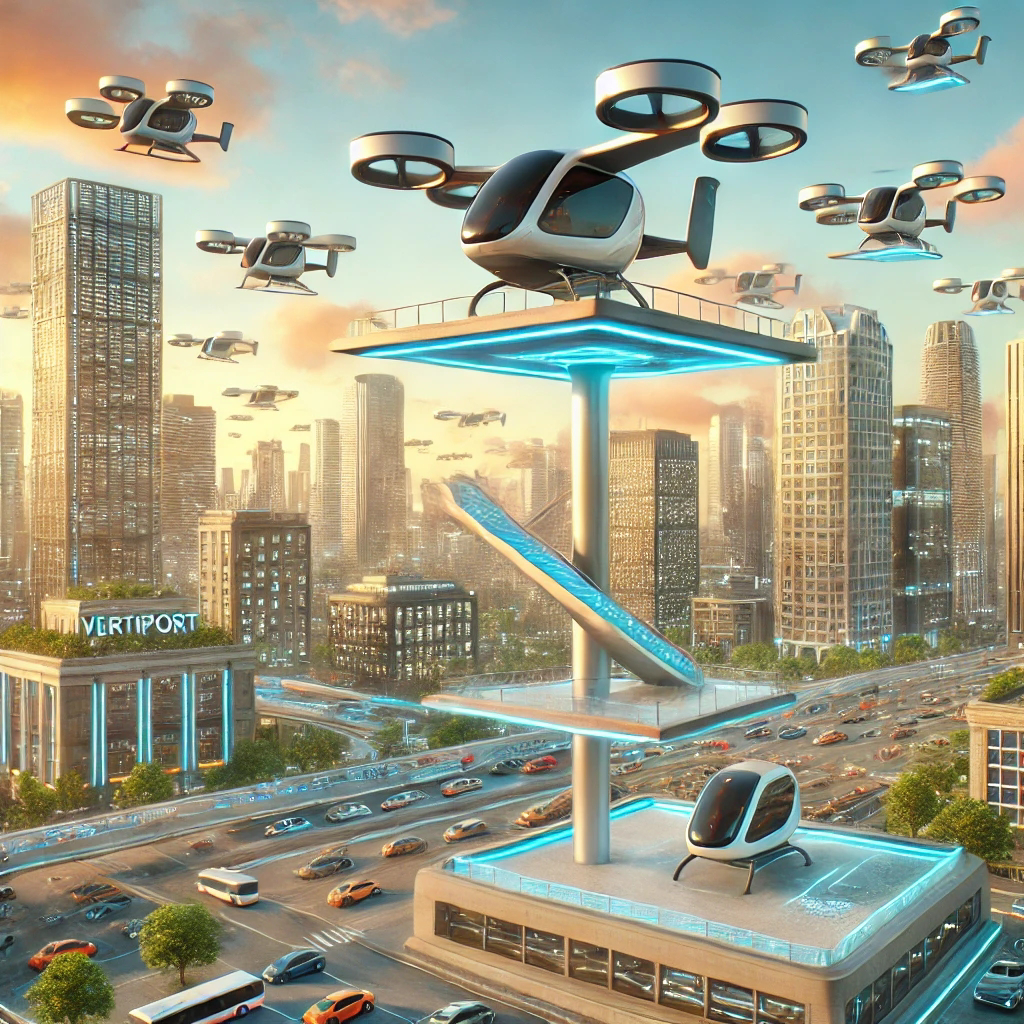The Future of Urban Air Mobility: Flying Taxis and Air Transportation
As cities become more congested, the demand for faster and more efficient transportation solutions is growing. Urban Air Mobility (UAM) is emerging as a revolutionary concept, using electric vertical takeoff and landing (eVTOL) aircraft to transport passengers across urban areas. Flying taxis, once a sci-fi dream, are now being developed by major aviation companies and startups, promising to redefine how people travel within cities.
What is Urban Air Mobility?
Urban Air Mobility (UAM) refers to air transportation systems designed for short, on-demand flights within cities. These systems use electric or hybrid aircraft to ease congestion, reduce travel time, and offer a sustainable alternative to traditional transport.
How Flying Taxis Will Work
1. Electric-Powered eVTOL Aircraft – Unlike helicopters, flying taxis use electric propulsion for quieter, safer, and more eco-friendly flights.
2. Vertiports – Dedicated landing and takeoff zones will be located on rooftops, parking lots, or transportation hubs.
3. Autonomous or Piloted Flights – Some models will have pilots, while others will be autonomous, using AI and sensors for navigation.
4. Ride-Sharing Services – Similar to Uber or Lyft, passengers will book flights via mobile apps for quick city travel.
Benefits of Urban Air Mobility
1. Reduced Traffic Congestion
Flying taxis can significantly cut travel times by bypassing traffic, reducing hours of commuting to just minutes.
2. Eco-Friendly Transportation
With electric propulsion, these aircraft produce zero emissions, helping reduce the environmental impact of urban transport.
3. Enhanced Connectivity
UAM can connect airports, business districts, and suburban areas more efficiently than ground-based transport.
4. Faster Emergency Response
Air ambulances and emergency responders can use UAM to reach accident sites quickly, saving lives in critical situations.
Challenges Facing Urban Air Mobility
Despite its potential, UAM faces several hurdles:
Regulatory Approvals – Governments need to establish rules for airspace management and safety.
Infrastructure Development – Cities must build vertiports and charging stations to support eVTOL operations.
Public Acceptance – Concerns over noise, safety, and affordability could slow adoption.
Battery Technology – Current battery limitations restrict flight range and efficiency.
Major Players in the Flying Taxi Industry
Several companies are leading the UAM revolution:
Joby Aviation – Developing an all-electric, long-range air taxi.
Airbus (CityAirbus) – Working on a quiet and efficient eVTOL model.
Volocopter – A German company focusing on urban air taxi trials.
Archer Aviation – Partnering with airlines to introduce flying taxis by 2025.
The Future of Urban Air Mobility
Experts predict that flying taxis could become operational by 2030, initially serving premium routes before expanding to mainstream urban transport. With continued investment and technological advancements, UAM could become as common as traditional ride-sharing services.
Urban Air Mobility represents the future of city transportation, offering a faster, cleaner, and more efficient alternative to ground travel. While challenges remain, rapid advancements in eVTOL technology, regulations, and infrastructure suggest that flying taxis will soon take flight, transforming how we navigate urban spaces.



Comments
Post a Comment